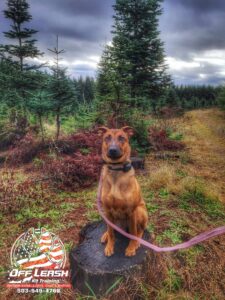Protect Your Pooch: Beware of Toxic Spring Plants in Your Garden
An overview of common toxic spring plants harmful to dogs, their symptoms, preventive measures for dog owners, and actions to take if your dog ingests a toxic plant.
Overview of Toxic Spring Plants for Dogs
As spring emerges, so do potential hazards for dogs in the form of toxic plants that can jeopardize their health. The blooming outdoor spaces become a treacherous playground for our canine friends, with many common plants turning into hidden dangers during this time of the year. Raising awareness about these toxic spring plants is essential for dog owners to prevent accidental ingestion and subsequent poisoning incidents.
Some popular spring plants toxic to dogs include tulips, hyacinths, daffodils, and azaleas. For instance, the ingestion of daffodils , which contain alkaloids, can lead to symptoms like vomiting, drooling, and abdominal pain in dogs. Understanding the risks associated with these plants can help dog owners take proactive measures to safeguard their pets from potential harm. By being informed about the specific dangers posed by various spring plants, pet owners can create a safer environment for their canine companions and enjoy the beauty of spring without unnecessary risks.
Common Toxic Spring Plants Harmful to Dogs
Spring is a time when various plants bloom, but some of these vibrant flowers can pose a severe risk to our canine companions. Among the common toxic spring plants harmful to dogs are tulip bulbs, hyacinths, daffodils, and azaleas. For instance, tulip bulbs contain toxins that, if ingested by dogs, can lead to gastrointestinal issues, drooling, and loss of appetite. The colorful hyacinths, while visually appealing, can cause distressing symptoms in dogs, such as vomiting, diarrhea, and even depression. Daffodils, another iconic spring flower, contain alkaloids that may result in unpleasant symptoms like vomiting, drooling, and abdominal pain in dogs. Moreover, azaleas, with their beautiful blooms, are highly toxic to dogs and can cause a range of symptoms, including weakness, drooling, and changes in blood pressure.
It’s crucial for dog owners to be aware of these toxic plants during the spring season to safeguard their furry friends. Understanding the specific dangers associated with tulip bulbs, hyacinths, daffodils, and azaleas can help prevent accidental ingestion and subsequent health issues in dogs. By being informed about the potential risks these plants pose, pet owners can take proactive measures to ensure a safe outdoor environment for their beloved pets.
 Symptoms of Plant Poisoning in Dogs
Symptoms of Plant Poisoning in Dogs
Plant poisoning in dogs can lead to a range of symptoms that can vary depending on the specific plant ingested. For instance, the ingestion of tulip bulbs can result in gastrointestinal issues like drooling, loss of appetite, and abdominal discomfort. Similarly, hyacinths are known to cause vomiting, diarrhea, and depression in dogs when consumed.
Moreover, daffodils contain alkaloids that can trigger symptoms such as vomiting, drooling, and abdominal pain in dogs. These signs can serve as crucial indicators that a dog may have ingested a toxic plant and requires immediate attention and care. It is essential for dog owners to be vigilant and watch out for any unusual behavior or physical symptoms in their pets, especially during the spring season when various toxic plants are in bloom.
 Preventive Measures for Dog Owners
Preventive Measures for Dog Owners
When it comes to safeguarding your beloved pets from toxic outdoor plants, there are several preventive measures that dog owners can take. One effective strategy is to consider creating a pet-friendly garden by incorporating non-toxic alternatives like marigolds, roses, and petunias. These pet-safe plants not only add beauty to your outdoor space but also provide a safe environment for your furry friends to roam without the risk of poisoning.
In addition to planting non-toxic flora, it is crucial for dog owners to routinely inspect their outdoor areas for any potentially harmful plants. By proactively identifying and removing toxic plants from your yard or garden, you can significantly reduce the chances of accidental ingestion by curious pets. This practice not only protects your dogs but also promotes a safer outdoor environment for all pets that may come into contact with the greenery.
Furthermore, educating your dogs to steer clear of consuming plants while outdoors is essential in preventing plant poisoning incidents. Training your pets to avoid nibbling on vegetation and providing them with engaging and safe activities can divert their attention from potentially hazardous plants. By instilling these habits and offering alternative sources of stimulation, you can minimize the risk of plant-related health issues and ensure the well-being of your canine companions.
Actions to Take If Your Dog Ingests a Toxic Plant
In the unfortunate event that your dog ingests a toxic plant, swift action is paramount to prevent serious consequences. Immediate treatment for plant poisoning in dogs may include several steps, such as inducing vomiting to expel the toxins from their system, administering activated charcoal to help absorb the harmful substances, or providing intravenous fluids to support their hydration and assist in flushing out toxins. For example, if your dog consumes azalea plants, which are highly toxic to dogs, causing symptoms like weakness, drooling, and changes in blood pressure, prompt action is essential to mitigate the effects and potentially save your pet’s life.
The prognosis for a dog that has ingested a toxic plant varies based on different factors. The type of plant ingested, the quantity consumed, and the promptness of the treatment all play a crucial role in determining the outcome. For instance, if a dog accidentally eats daffodil bulbs, which contain alkaloids leading to symptoms such as vomiting, drooling, and abdominal pain, the severity of the poisoning can be influenced by the amount ingested and how quickly intervention is sought. Therefore, it is vital to act swiftly, contact a veterinarian or animal poison control center for guidance, and follow their instructions diligently to ensure the best possible outcome for your furry companion.


 Symptoms of Plant Poisoning in Dogs
Symptoms of Plant Poisoning in Dogs Preventive Measures for Dog Owners
Preventive Measures for Dog Owners